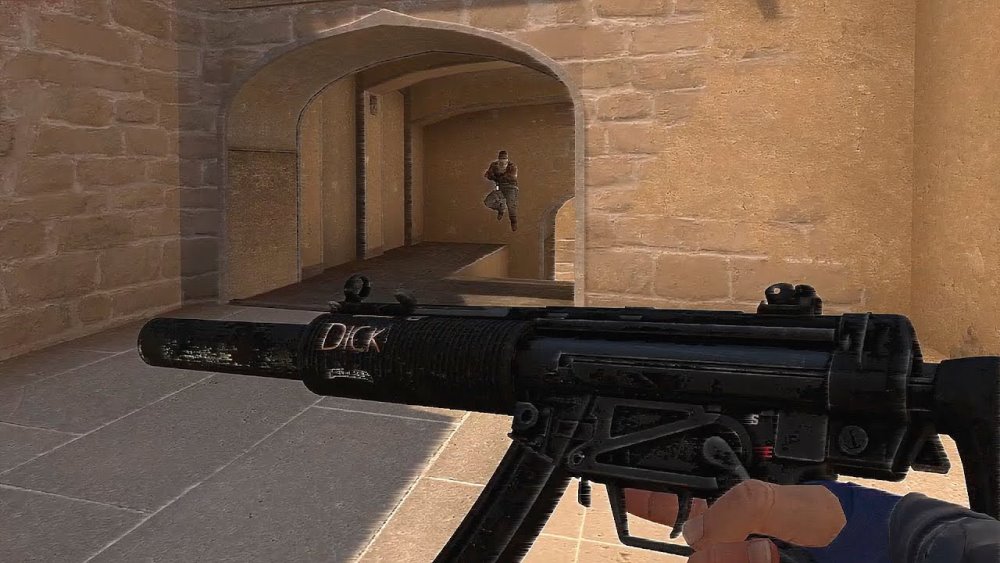
The term “damage” in CS:GO usually refers to the amount of harm a weapon can inflict on an opponent. This can vary based on a range of factors, including:
- Weapon Type: Each weapon in CS:GO has a different base damage. This is the maximum amount of damage a weapon can inflict in a single shot if it hits an enemy without armor in the chest at point-blank range.
- Armor: Players can buy armor and helmets to reduce incoming damage. Helmets prevent one-shot headshot kills from some weapons. Armor reduces the damage received from body shots.
- Hit Location: Damage can vary based on where a shot lands. Headshots deal the most damage, while shots to the chest and stomach deal less, and shots to the arms and legs deal the least damage.
- Range: Some weapons deal less damage at longer ranges. This damage falloff can significantly affect the number of shots needed to kill an enemy.
- Wall Penetration: Some weapons can shoot through walls or other obstacles, but this usually reduces the damage dealt.
.
Remember, all of these factors contribute to the strategic choices players make in CS:GO when it comes to weapon selection, position, and aim.

Weapon Type
In Counter-Strike: Global Offensive (CS:GO), there are several types of weapons, each with its own attributes, including base damage, fire rate, recoil, price, and more.
Here are some of the weapon categories and examples:
- Pistols: These are sidearms used typically as secondary weapons or as primary weapons in the first rounds due to their lower cost. Examples include the Glock-18, P2000, Desert Eagle, and P250. Pistols generally have a lower damage output than primary weapons but can still be lethal with precise aim, especially with headshots.
- Submachine Guns (SMGs): These are automatic weapons that fire faster than rifles but typically deal less damage per bullet. Examples include the MP9, UMP-45, and P90. SMGs are often used in close-quarters combat or in rounds when the player cannot afford a rifle.
- Rifles: These are the primary weapons used in most rounds. Rifles can be either automatic (like the AK-47 or M4A4) or semi-automatic/sniper rifles (like the AWP or Scout). Rifles deal substantial damage and have a good range, but they also have significant recoil, especially when fired in full-auto mode.
- Shotguns: These weapons deal massive damage at close range, firing multiple pellets with each shot. However, they have a significant damage drop-off at long range. Examples include the Nova and XM1014.
- Heavy: This category includes machine guns like the Negev and M249. These guns have a high rate of fire, large magazine capacity, and deal substantial damage. However, they are expensive and have considerable recoil.
Each of these weapon types serves different purposes and suits different strategies and play styles in CS:GO. It’s also important to note that the effectiveness of a weapon is not only determined by its damage but also by factors such as its accuracy, recoil, fire rate, and the player’s ability to control it.
Armor:
Armor in Counter-Strike: Global Offensive (CS:GO) plays a crucial role in reducing the amount of damage a player takes from attacks.
Here’s a brief explanation of how it works:
- Kevlar (Armor): Costing $650, Kevlar reduces the damage taken from shots to the chest and stomach by roughly 40%. Additionally, it also prevents aim punch (screen shaking and loss of accuracy when hit) from unarmored shots.
- Helmet: For an additional $350 (total cost $1000 if bought together), you can also buy a helmet, which provides head protection. The helmet greatly reduces the damage from headshots, with the exception of a few weapons like the AWP, which can still inflict a one-shot kill regardless of helmet protection.
Without armor, players can suffer severe damage and are often quickly eliminated in gunfights, making armor a standard purchase in most rounds when players have sufficient funds.
It’s also worth noting that armor degrades as it absorbs damage, but it will never completely break within a single round, even if its value drops to zero. However, if it drops below a certain threshold (generally considered to be around 40), you may want to consider rebuying armor in the next round to ensure you have full protection.
Finally, armor also affects the amount of aim punch (flinching) you experience when hit. If you’re unarmored and get shot, your aim will be thrown off significantly, making it much harder to return fire accurately. This effect is drastically reduced if you have armor.
Remember, the specific numbers and mechanics may change over time with updates to the game, so always check the latest update notes or community guides for the most current information.
Hit Location
In Counter-Strike: Global Offensive (CS:GO), the location where a bullet hits a player can greatly affect the amount of damage inflicted.
Here’s a general rundown of how different hit locations impact damage:
- Head: Shots to the head inflict the most damage, often resulting in instant kills, particularly if the player hit doesn’t have a helmet. Even when a helmet is worn, many weapons can still inflict a one-shot kill to the head. The AWP, for example, can kill helmeted players with a single headshot.
- Chest and Stomach: Shots to the chest and stomach inflict moderate damage. The stomach area takes slightly more damage than the chest area.
- Arms and Legs: Shots to the arms and legs inflict the least damage. Also, it’s important to note that shots to the arms don’t get damage mitigation from Kevlar armor.
The specific multipliers for damage based on hit location can vary depending on the weapon used. For example, sniper rifles have a high damage multiplier for headshots, while shotguns have a lower multiplier.
Moreover, a player’s stance (standing, crouching, or jumping) can also affect the hitbox areas and therefore where shots may land.
Understanding these hit location damage modifiers can be important for improving your performance in CS:GO, as it can inform your decision on where to aim to maximize damage, particularly in high-pressure situations. It’s also crucial in understanding the mechanics of different weapons, some of which may be more or less forgiving based on where your shots land.
Remember, the specifics can change over time as the game is updated, so make sure to check for the latest information in community guides or update notes.
Range
In Counter-Strike: Global Offensive (CS:GO), the damage a weapon inflicts can vary depending on the range at which it’s used. This is known as damage falloff.
Each weapon in CS:GO has a different damage falloff rate, which is the reduction in damage output over distance. For instance, shotguns and submachine guns are particularly effective at close ranges, but their damage decreases significantly over long distances. In contrast, rifles and sniper rifles maintain a consistent damage output over longer ranges.
It’s important to note that not all weapons experience damage falloff to the same degree. Weapons like the AWP (Arctic Warfare Police sniper rifle) can deliver one-shot kills at any range if you hit the enemy in the right spot (like the head or sometimes the chest, depending on whether the enemy has armor).
Understanding the range and damage falloff of the weapon you’re using is critical in CS:GO as it influences your positioning and tactics. For instance, if you’re using a weapon that excels at close range, you’ll want to navigate the map in a way that lets you engage enemies in close quarters. Conversely, with a weapon that performs well at long range, you’ll aim to take fights where there’s a good amount of distance between you and your opponent.
Remember, as with all aspects of CS:GO, the specifics can change over time with game updates, so always check the latest community guides or update notes for the most current information.
Wall Penetration
In Counter-Strike: Global Offensive (CS:GO), wall penetration (or wallbanging) refers to the ability of weapons to fire through certain surfaces and objects. When a bullet passes through a penetrable object, it usually inflicts less damage than a direct hit because of the damage reduction associated with penetration.
Each weapon in CS:GO has a specific penetration power that determines how effective it is at shooting through surfaces. For example, rifles and sniper rifles like the AK-47 and AWP have high penetration power, allowing them to shoot through certain walls and objects, while pistols and SMGs generally have lower penetration power.
The extent to which a bullet can penetrate a surface also depends on the material of the surface. For instance, wooden and thin metal surfaces are usually penetrable, while thicker and harder materials like concrete are typically impenetrable.
In addition to causing reduced damage, shooting through walls and obstacles can also cause a bullet’s trajectory to change. This can make it harder to hit opponents accurately through walls.
Wall penetration is an important aspect of CS:GO’s gameplay, as it allows for creative strategies and unexpected attacks. However, it requires a good understanding of the game’s maps and weapon mechanics to use effectively.
As with all aspects of CS:GO, the specific mechanics of wall penetration can change over time with game updates, so always check the latest community guides or update notes for the most current information.


